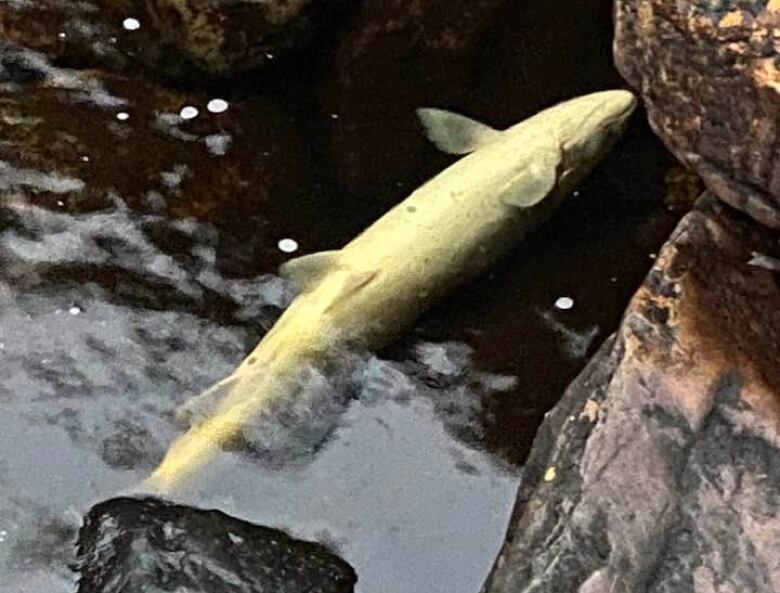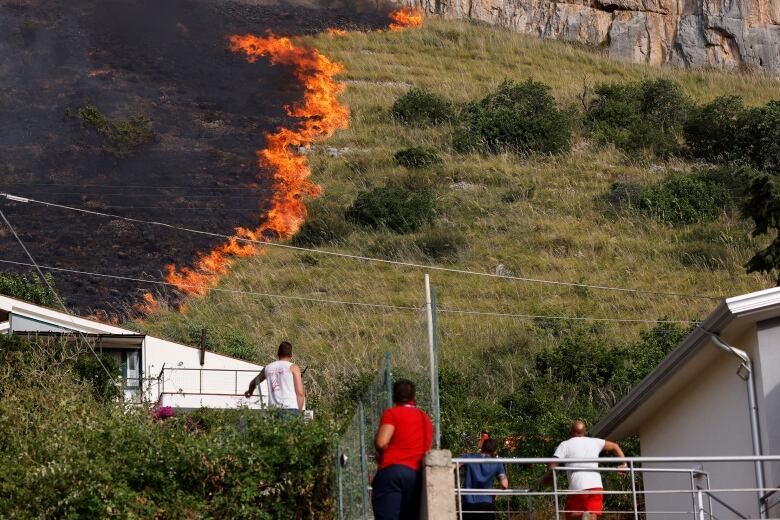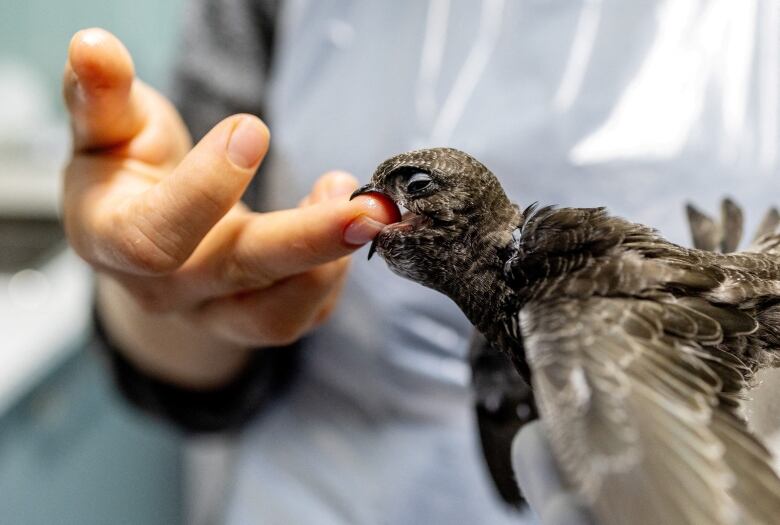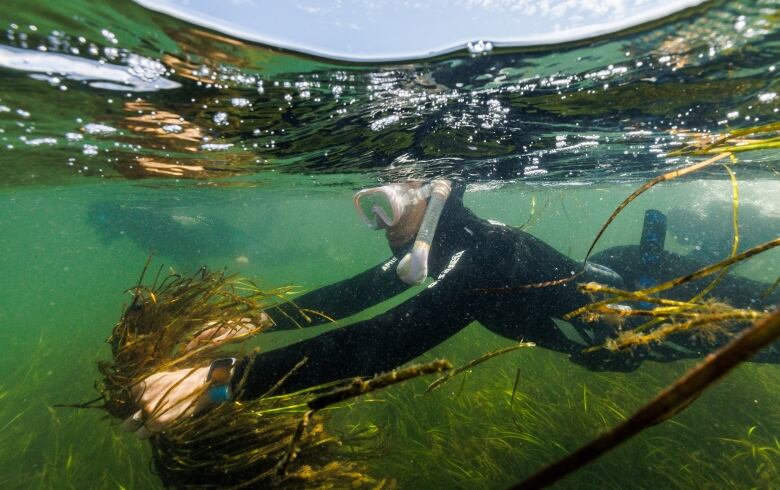Waters off the coast of Florida as hot as a hot tub, and more heat news from around the world
Phoenix approaching a full month at 43 C; fires throughout southern Europe
The water temperature off southernFlorida has been about 38 C two days in a row: that's as hot as a hot tub,as hot as the maximum recommended heat for a baby's bath, and hotter than what's usually recommended for a pregnant woman.
It's also, meteorologists say, possibly the hottest seawater ever measured.
The U.S. National Oceanic and Atmospheric Administration (NOAA) says weather records for sea water temperature are unofficial and there are certain conditions in this reading that could disqualify it for a top mark, but the initial reading on a buoy at Manatee Bay hit about 38.4 CMonday evening. The night before, it was 37.9 C.
"This is a hot tub. I like my hot tub around 100, 101, [37.8, 38.3 C]. That's what was recorded yesterday," said Yale Climate Connections meteorologist Jeff Masters.

If verified, the Monday reading would break the prior recordset in the waters off Kuwait three summers ago, 37.6 C.
The consequences for sea corals are serious.
Bleachingwhich doesn't kill coral, but weakens it and can lead to deathoccurs when water temperatures exceed the low 30s.
This all comes as sea surface temperatures worldwide have broken monthly records for heat in April, May and June, according to NOAA. Temperatures in theNorth Atlantic are off the charts, upto6 C warmer than normal in some spots near Newfoundland, University of Miami tropical meteorologist Brian McNoldysaid.
From cactidying in the U.S. to chicks leaping from nests to save themselves from the heat in Europe, here's a roundup on the latest effects of climate change worldwide.
In the U.S.: Could the Phoenix weather break? (Only 42 C on Monday)
This counts as a break for Phoenix, Ariz.
The fifth-largest city in the U.S. has hit 43.3 C for almost four weeks, butmeteorologist Isaac Smith, of the U.S. National Weather Service in Phoenix, said the high is expected to be 42.2 C by next Monday.
Before this year, the longest stretch of days where temperatures reached 43 was 18, in 1974, said Erinanne Saffell, Arizona's state climatologist.

Phoenix last got measurable precipitation on March 22.
"In the early 1900s, Phoenix had about five days, on average, every year that were 100 degrees or higher," Saffell said. "Nowwe're five times that number on average."
A symbol of the U.S. West is dying in that heat.
Arizona's saguaro cacti are leaning, losing armsand, in somecases, falling over. Summer monsoon rains the cacti rely on have failed toarrive, testing the ability of the 12-metregiant to survive in thewild.

In Oregon, a fire that started over the weekend has burned dozens of homes and caused area residents to lose 911 service and internet. The Oregon State Fire Marshal said the fire destroyed 43 residences near the town of Bonanza. Law enforcement officials say the blaze may have started on property being used to grow marijuana illegally.

In Canada:Salmon fishing rivers feeling the heatin N.L.
Dozens of salmon fishing rivers are limited to "morning angling only"in Newfoundland and Labrador by the Department of Fisheries and Oceans, which cited extremely high water temperatures and a lack of rainfall in a statement on Tuesday.
Temperatures of over 20C are being reported at rivers across the province, according to Craig Purchase, a professor of fish biology at Memorial University.
Purchase said water temperatures surpassing 22 and 23 C havebeen seen before especially in the past few years but seeing those reported temperatures for an extended period is concerning.
Anglers who have shared photos with CBC News have reported dead salmon washing up atLower Falls in Dunville, N.L.
"This is entirely predictable. You would expect salmon to die under these conditions," Purchase said.

There are currently heat warnings in four provinces: Saskatchewan, Ontario, Nova Scotia, and Newfoundland and Labrador.
In Europe: Fires throughout the south, including Game of Thrones stand-in Dubrovnik
Major fires raging in parts of Greece and in other Mediterranean countries advanced Wednesday, causing additional deaths, destroying homes and threatening nature reserves during a third successive wave of extreme temperatures.
New evacuations were ordered overnight on the islands of Corfu, Evia and Rhodes, where thousands of tourists were moved to safety over the weekend. Authorities said the charred remains of a missing farmer were found in southern Evia a discovery made following the death of two Greek firefighting pilots, who were killed in a crash during a low-altitude water drop.
The summer wildfires have struck countries across the region, includingAlgeria, where at least 34 people were killedin recent days.
In Italy, the bodies of two elderly people were found in a home that had been consumed by flames near the Palermo airport, on the island of Sicily, which had been closed temporarily because of the encroaching flames, according to Italian news reports. Freak storms in the north of the countryalso left two people dead on Tuesday from falling trees.

In Croatia, a wildfire was burning several kilometres away from the famous walled town of Dubrovnik, in the country's south along the Adriatic Sea coast, where water-dropping planes and more than 100 firefighters held back the blaze before it reached houses overnight. The medieval stone city, a protected heritage site and Croatia's best-known tourism destination, was the main stand-in for the Game of Thrones city of King's Landing.

In Portugal, more than 500 firefighters continued to combat a blaze close to Lisbon. The fire forced the evacuation of 90 people from their homes, along with 800 farm animals.

In Switzerland, sparrows andswifts have arrived in droves at a centretreatingdistressed birds after soaring temperatures caused them todehydrate, with chicks even leaping from their nests in adesperate attempt to evade the blistering heat.
The Centre Ornithologique de Radaptation on the outskirtsof Geneva admitted around 30 birds a day, many with heat-relatedailments, when temperatures soared past 30 C this month.
"This is not an issue we had before," saidornithologist Patrick Jacot, referring tothe scores of birds adversely affected by the heat.
Birds that nest in hollow places, in anything from eaves tomailboxes, are particularly vulnerable. Their nesting grounds sometimes metallic overheat, causing hatchlings to jump indramatic and sometimes lethal fashion.
"Birds will jump out on their own when they are not at allold enough to leave the nest," said biologist Fanny Gonzalez, a specialist in biodiversity conservation who works at the centre. "They will fall a few metres, end up on the equally hot asphaltand be completely helpless there."

In northern Germany,scuba divers used hand trowels to digup emerald green seagrass shoots, complete with roots, from adense underwater meadow, then headed out the next day to a barren area farther northto replant them.
One diver holds a line, and theother uses it to navigate the murky waters and swim around him.
They hope this painstaking work, part of a new project thattrains local citizens to restore seagrass meadows in the BalticSea, can help tackle climate change.
The meadows act as vast natural sinks that can storemillions of tonnes of carbon, but they have reduced sharply over
the last century due to worsening water quality, scientists say.

With files from The Associated Press and Reuters













_(720p).jpg)


 OFFICIAL HD MUSIC VIDEO.jpg)
.jpg)



























































































